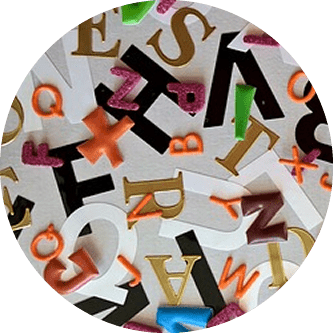Marketing and Sales Communications

Marketing and Sales Communications: Expertise
In today’s globalized world, effective communication is vital for businesses to reach new markets and expand their customer base. When it comes to marketing and sales communications, translations play a crucial role in bridging language barriers and conveying messages accurately to target audiences. Whether it’s a product description, advertising campaign, or sales pitch, translating marketing content requires careful consideration of cultural nuances, local preferences, and linguistic subtleties.
These translations should go beyond mere textual conversion and instead adapt the content to resonate with the target audience, capturing the essence of the brand and ensuring the message is culturally appropriate. A successful translation in this context requires not only fluency in the target language but also a deep understanding of the local market, consumer behavior, and cultural context.
One of the key aspects of translation for marketing and sales communication is transcreation. Transcreation goes beyond literal translation to recreate the message in a way that evokes the same emotional response and impact as the original content. It involves adapting slogans, taglines, and creative elements so that they resonate with the target audience and convey the intended brand image. Transcreation is particularly important when dealing with idiomatic expressions, wordplay, or culturally specific references that may not have a direct equivalent in the target language.
Moreover, translations for marketing and sales communication must consider the medium used and the platform on which the content will be delivered. Examples include websites, social media, brochures, and video ads. Each channel may require different approaches to effectively engage the target audience. Localizing content for specific markets involves adapting not only the language but also visuals, design elements, and even the overall tone so that they align with cultural norms and expectations.
To guarantee high-quality translations for marketing and sales communications, businesses often rely on professional translation services or collaborate with in-country experts who possess the necessary language skills and cultural knowledge. By investing in accurate and culturally appropriate translations, companies can effectively communicate their value proposition, build customer trust, and ultimately drive sales in new markets, resulting in long-term business growth. TrueLanguage has decades of experience, proven systems, and quality assurance processes for ensuring that your next global marketing campaign or corporate communication conveys exactly the message you intended.
Formatting and Layout
Formatting and layout play a crucial role in translations for marketing and sales communications since they contribute to the overall presentation and visual appeal of the content. When adapting marketing materials for different languages and cultures, it’s important to consider not only the textual content but also how it is visually presented to the target audience.
Maintaining a consistent layout across different language versions is essential to ensure brand consistency and recognition. This includes preserving the overall design elements, such as logos, colors, fonts, and imagery, while adapting them to fit the linguistic and cultural context. Adjustments may be necessary to accommodate variations in text length, direction (e.g., left-to-right or right-to-left), or even the size of text boxes to avoid text overflow or awkward spacing.
Another key aspect to be taken into account are the cultural preferences and aesthetics of the target audience. Visual elements, such as images, graphics, and icons, should be evaluated to ensure they are culturally appropriate and resonate with the local audience. For example, certain colors, symbols, or gestures may have different meanings or connotations in different cultures, and it’s crucial to adapt them accordingly to avoid any misunderstandings or offense.
In addition to the visual presentation, formatting considerations also extend to the functional aspects of the translated content. These include the proper alignment of text, consistent use of headings and subheadings, bullet points, and paragraphs, as well as maintaining the original hierarchy and structure of the content. Attention to detail in formatting helps guarantee that the translated material is easily readable and accessible, enhancing the overall user experience and comprehension.
To achieve consistent formatting and layout in translated marketing and sales communications, collaboration between translators and design professionals is essential. Translators can provide linguistic expertise and cultural insights, while designers can verify that the translated content fits seamlessly into the visual framework. By combining their skills, they can create a cohesive and visually appealing final product that effectively communicates the intended message and brand image to the target audience.
Taken together, the formatting and layout in translations for marketing and sales communications are critical elements that contribute to the success of international campaigns. Through meticulous review of both the visual and functional aspects, businesses can be certain that their translated materials maintain brand consistency, engage the target audience, and ultimately drive sales and business growth in new markets.


Glossary and Style Guide
Glossaries and style guides are indispensable tools in translations for marketing and sales communications. They help maintain consistency, accuracy, and brand voice across different language versions, making sure that the translated content aligns with the company’s messaging and image.
A glossary is a comprehensive list of key terms, phrases, and specific terminology used in marketing and sales materials. It serves as a reference for translators, providing them with approved translations for important terms, brand-specific jargon, product names, and slogans. By utilizing a glossary, translators can lock in consistent terminology usage throughout the translated content, which is crucial for maintaining brand identity and avoiding confusion among the target audience. The glossary can be continually updated and expanded to incorporate new terms as the company evolves.
Style guides, on the other hand, outline specific guidelines for linguistic and stylistic choices in translations. They provide instructions on matters such as tone, writing style, grammar, punctuation, and formatting preferences. Style guides help translators to understand the company’s desired brand voice and to reflect it consistently in the translated materials. They may also cover cultural considerations, providing guidance on how to adapt content to resonate with the target audience. Style guides act as a reference tool for translators, enabling them to produce translations that are not only accurate but also stylistically appropriate and consistent with the company’s brand guidelines.
Both glossaries and style guides facilitate collaboration between translators, editors, and marketing professionals. By establishing a shared understanding of terminology and linguistic preferences, these tools streamline the translation process and minimize the need for extensive revisions or corrections. They also promote efficiency and speed, especially in ongoing translation projects or when working with multiple translators or translation teams.
Input from subject matter experts, marketing professionals, and experienced translators is necessary for creating and maintaining glossaries and style guides. These require regular updates to reflect changes in a company’s branding, products, and industry-specific terminology. Collaborative efforts help ensure that such resources evolve in tandem with the company’s growth, supporting consistent and effective translations for marketing and sales communications.
There is also the question of localization versus generalization. At TrueLanguage, we offer specific direction and guidance in accordance with our proprietary LocalVoice™ and TrueGlobal™ processes.
Want to know more about our glossary and style guide creation process? We have additional online content that provides more detailed information about our approach and methodology. These additional resources are available here: Glossary and Style Guide Resources
Global marketing and sales communications present unique challenges. Companies need a partner like TrueLanguage that has the experience and expertise to help them achieve their international goals.

In Country Review
In-country review by native subject matter experts guarantees fulfillment of local standards and satisfaction of all criteria for distribution. Let it guide your approach to new markets.

Quality Management
Our end-to-end quality management process monitors your translations at every step. And our language portal can provide 24/7 access to your projects, project manager, documents, and budget.

Subject Matter Expertise
Our language professionals include subject matter experts in marketing and sales communications, with fluency in the target languages but also deep understanding of local markets, consumer behavior, and cultural context
Marketing and Sales Communication Relevant Articles
Why Every Global Brand Needs a Terminology Management Strategy
Learn why a robust terminology management strategy is essential for global brands. Enhance consistency, translation quality, and customer trust with effective language practices.
Why Manufacturing Companies Need Specialized Translation Services
Manufacturing companies face unique challenges in global markets, making specialized translation services essential for success. From technical manuals to compliance documents, discover how TrueLanguage ensures precision and efficiency in every translation.
Top Industries That Benefit Most from Transcreation Services
Learn how transcreation services help industries like marketing, media, retail, travel, and life sciences adapt their messaging with cultural nuance and emotional resonance. Explore the top industries benefiting from transcreation and how it drives global success.



